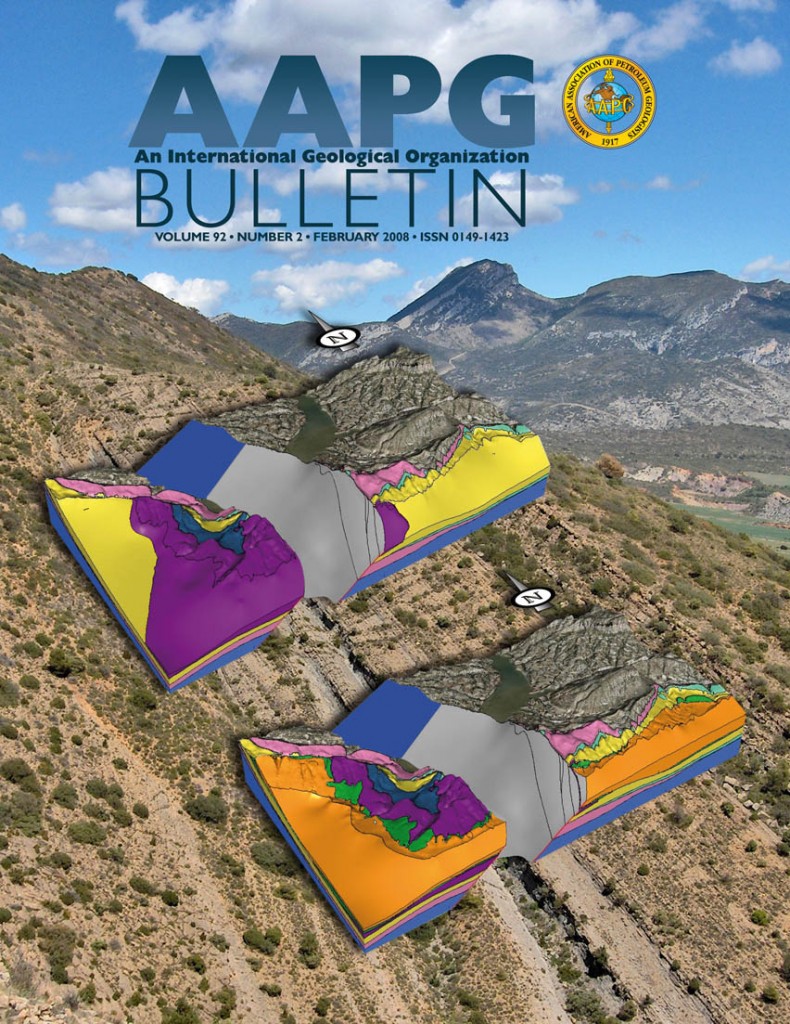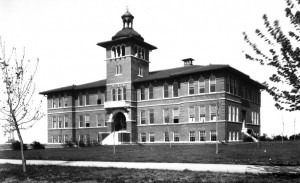Growing oil demand challenged petroleum geologists, who organized a professional association.
As demand for petroleum grew during World War I, the science for finding oil and natural gas reserves remained obscure when a small group of geologists in 1917 organized what became the American Association of Petroleum Geologists (AAPG).
AAPG began as the Southwestern Association of Petroleum Geologists in Tulsa, Oklahoma, after about 90 geologists gathered at Henry Kendall College, now Tulsa University. They formed an association of earth scientists on February 10, 1917, “to which only reputable and recognized petroleum geologists are admitted.”
Rapidly multiplying mechanized technologies of the “Great War” brought desperation to finding and producing vast supplies of oil. America entered the First War I two months after AAPG’s founding. An October 1917 giant oilfield discovery at Ranger, Texas, inspired a British War Cabinet member to declare, “The Allied cause floated to victory upon a wave of oil.”
Rock Hounds
In January 1918, the AAPG convention of in Oklahoma City reported 167 active members and 17 associate members. After adopting its present name one year after organizing at Henry Kendall College, the group issued its first technical bulletin, using papers and presentations delivered at the 1917 Tulsa meeting.
The professional “rock hounds” produced a mission statement that included promoting the science of geology, especially relating to oil and natural gas. The geologists also committed to encouraging “technology improvements in the methods of exploring for and exploiting these substances.”
AAPG also began publishing a bimonthly journal that remains among the most respected in the industry. The peer-reviewed Bulletin included papers written by leading geologists of the day.
With a subscription price of five dollars, the journal was distributed to members, university libraries, and other industry professionals.
Finding Faults and Anticlines
By 1920, one petroleum trade magazine — after complaining of the industry’s lack of skilled geologists — noted the “Association Grows in Membership and Influence; Combats the Fakers.”
The article praised AAPG professionalism and warned of “the large number of unscrupulous and inadequately prepared men who are attempting to do geological work.”
Similarly, the Oil Trade Journal praised AAPG for its commitment “to censor the great mass of inadequately prepared and sometimes unscrupulous reports on geological problems, which are wholly misleading to the industry.”
Perhaps the best known such fabrication is related to the men behind the 1930 East Texas oilfield discovery — a report entitled “Geological, Topographical And Petroliferous Survey, Portion of Rusk County, Texas, Made for C.M. Joiner by A.D. Lloyd, Geologist And Petroleum Engineer.”
Using very scientific terminology, A.D. Lloyd’s document described Rusk County geology — its anticlines, faults, and a salt dome — all features associated with substantial oil deposits…and all completely fictitious.
The fabrications nevertheless attracted investors, allowing Joiner and “Doc” Lloyd to drill a well that uncovered a massive oil field, still the largest conventional oil reservoir in the lower-48 states.

AAPG’s peer-reviewed journal first appeared in 1918, one year after the association’s first meeting in Tulsa.
Equally imaginative science came from Lloyd’s earlier descriptions of the “Yegua and Cook Mountain” formations and the thousands of seismographic registrations he ostensibly recorded. Lloyd, a former patent medicine salesman, and other self-proclaimed geologists, were the antithesis of the AAPG professional ethic.
In 1945, AAPG formed a “Committee on Boy Scout Literature” to assist the Boy Scouts of America in updating requirements for the “mining” badge, which had been awarded since 1911 (learn more in Merit Badge for Geology).
By 1953, AAPG membership had grown to more than 10,000 and a permanent headquarters building opened Tulsa. The association’s 2022 membership included about 40,000 members in 129 countries in the upstream energy industry, “who collaborate — and compete — to provide the means for humankind to thrive.”
The world’s largest professional geological society, a nonprofit organization, maintains a membership code to assure “integrity, business ethics, personal honor, and professional conduct.”
Oil Patch Historians
Longtime AAPG member Ray Sorenson, a Tulsa-based consulting geologist, has made numerous presentations about the history of petroleum. After publishing papers in leading academic journals, he adapted many of his contributions for the association’s 2007 Discovery Series, “First Impressions: Petroleum Geology at the Dawn of the North American Oil Industry.”
Further, Sorenson continued to research and collect a vast amount of material documenting the earliest signs of oil — worldwide references to hydrocarbons earlier that the 1859 first U.S. oil well drilled by Edwin Drake in Pennsylvania.
Drake expert and geologist and historian William Brice, professor emeritus at the University of Pittsburgh at Johnstown, in 2009 published Myth, Legend, Reality – Edwin Laurentine Drake and the Early Oil Industry. His 661-page epic was researched and written as part of the U.S. petroleum industry’s 150th anniversary (learn more in Edwin Drake and his Oil Well),
As part if AAPG’s 2017 centennial events, geologist Robbie Rice Gries published Anomalies: Pioneering Women in Petroleum Geology 1917-2017. Researched with help from AAPG volunteers, her 405-page book includes contributors’ personal stories, written correspondence, and photographs dating back to the early 1900s.
The stories in Gries’ book should be read by every petroleum geologist, geophysicist and petroleum engineer, according to independent producer Marlan Downey, founder of Roxanna Oil Company. “Partly for the pleasure of the sprightly told adventures, partly for a sense of history, and, significantly, because it engenders a proper respect towards all women professionals, forging their unique way in a ‘man’s world.’”
_______________________
Recommended Reading: Anomalies: Pioneering Women in Petroleum Geology 1917-2017 (2017); Trek of the Oil Finders: A History of Exploration for Petroleum (1975); Myth, Legend, Reality – Edwin Laurentine Drake and the Early Oil Industry (2009); The Prize: The Epic Quest for Oil, Money & Power (1991); The Birth of the Oil Industry (1936). Your Amazon purchase benefits the American Oil & Gas Historical Society. As an Amazon Associate, AOGHS earns a commission from qualifying purchases.
_______________________
The American Oil & Gas Historical Society preserves U.S. petroleum history. Please become an AOGHS annual supporter and help maintain this energy education website and expand historical research. For more information, contact bawells@aoghs.org. Copyright © 2025 Bruce A. Wells. All rights reserved.
Citation Information – Article Title: “AAPG – Geology Pros since 1917.” Authors: B.A. Wells and K.L. Wells. Website Name: American Oil & Gas Historical Society. URL:https://aoghs.org/energy-education-resources/aapg-geology-pros-since-1917. Last Updated: February 4, 2025. Original Published Date: April 29, 2014.





